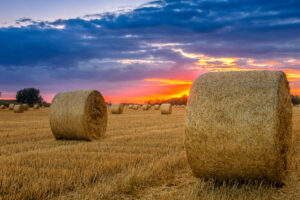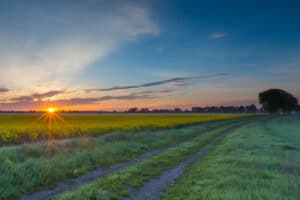If you’re thinking about purchasing property for equine use, the list of what to look for or look out for is virtually limitless. The problems and possibilities are often as obvious as they are exceptionally latent, but regardless, it’s imperative that you identify them early on. I frequently tell my clients, “When approaching the development of an equestrian property, the design is out there. It’s in the property and we just have to find it.” I’d like to address a few key questions that will hopefully give you some direction as you start the process.
1. How will the property be utilized?
Identifying the ways in which the property will be utilized will narrow down what to look for and what to look out for. Requirements for a residence may differ greatly from those of an equine or event facility, so it’s imperative to have a clear idea of what the property will serve as a foundation for. Establishing a vision for the property early on will help you avoid costly fixes later. You’ll want to investigate any plans for growth development in the area. It may be that the county intends to build a highway or set up a series of retail outlets in the next few years that could potentially be disruptive to your plans for the property. Speak to neighboring property owners to get a feel for the area and learn about the history. Check out local newspapers or go online and read published reports of recent public hearings and local planning meetings. Do your homework!
2. What are the natural characteristics of the location?
Climate, elevation, weather, weather extremes, seasonal changes, and availability of basic utilities (water, power, sewer, access to roads and vendors) all present challenges when establishing and managing horse property. The natural obstacles faced by a farm in the Northwest vastly differ from those in the Southwest, so it’s important to consider the characteristics of your property’s location. Proper drainage is crucial to any property for the health and safety of the horse. Will run off be an issue? Will you be able to draw water from an existing body of water or will a holding tank be required? How accessible to power and roadways is the property? I recommend retaining the services of a professional local civil engineer who can examine the current conditions and help you determine what you’ll face down the road.
3. What currently exists?
Find out what assets or limitations come with the property. What is the tax status/classification? Will you be renovating/repurposing existing structures? If so, what condition are they in? Are there man-made restrictions (zoning, covenants, historic preservation status)? Check with the county about what steps would need to be taken to organize the property the way you envision it. Again, do your homework!
4. Will this property serve my goals?
Whether your goal is to maintain a residence and private equestrian boarding facility or to create an equine-centric business, you must determine if the property is right for your lifestyle and your horse’s well being. If you haven’t already, create a separate budget for property improvements and infrastructure needs as soon as they are identified. Be sure to include pasture preparation and fencing. Are these things feasible given what you’ve learned about the location and property attributes? Create a list of health and safety needs for your horse. Include your own lifestyle needs as well. Would developing this property hinder the fulfillment of any of those needs? Reconsider purchasing if it would. All properties are unique and they can be modified to some degree, but how much time, energy, and money are you willing to spend to mold problematic property? Consult with professionals, such as Blackburn Architects and other Field Sport Concept affiliates, who can help align your goals with what the property has to offer.
For an equine property to be successful it must balance the goals of the owner, the natural demand of the property, and the health, safety and well-being of the horse.
Written by John Blackburn, AIA, Senior Principal at Blackburn Architects, P.C., author of Healthy Stables By Design and affiliate of Field Sport Concepts has over 35 years of experience in the practice of architecture. He is responsible for the overall firm management. His award-winning designs include a full range of project types and services, from programming, existing facility evaluation, and master planning to new construction, adaptive reuse, and historic preservation.
This content may not be used or reproduced in any manner whatsoever, in part or in whole, without written permission of LANDTHINK. Use of this content without permission is a violation of federal copyright law. The articles, posts, comments, opinions and information provided by LANDTHINK are for informational and research purposes only and DOES NOT substitute or coincide with the advice of an attorney, accountant, real estate broker or any other licensed real estate professional. LANDTHINK strongly advises visitors and readers to seek their own professional guidance and advice related to buying, investing in or selling real estate.










Add Comment